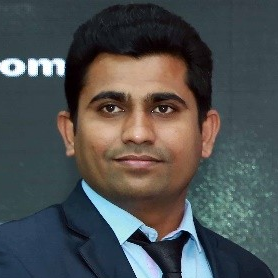Solid-State Supercapacitors
A special issue of Applied Sciences (ISSN 2076-3417). This special issue belongs to the section "Materials Science and Engineering".
Deadline for manuscript submissions: closed (30 June 2019) | Viewed by 404
Special Issue Editors
Interests: advanced functional materials and nanocomposites; energy storage devices; supercapacitors and batteries (Li/K and Al-batteries)
Special Issues, Collections and Topics in MDPI journals
Interests: printable organic semiconductors; flexible plastic electronics; optoelectronics; bioelectronics; organic solar cells; wearable electronics; smart materials
Special Issue Information
Dear Colleagues,
Current portable/wearable electronic devices such as mobile phones, smartwatch, cameras, activity trackers, and many more have greatly changed our lifestyles and brought significant convenience to us. Nevertheless, the increased energy consumption of these smart electronics requires improved energy storage devices. Electrochemical energy storage (EES) systems such as supercapacitors (SCs) and batteries are the most successful players and have been widely investigated in both academia and industry.
Supercapacitors (SCs) have attracted significant interest during the past several decades owing to their superior energy density (compared with conventional capacitors), good power density (compared with batteries), rapid charge/discharge rates, and long cycle life. However, traditional SCs exhibit clumsy bulk shapes (i.e., a separator sandwiched between two electrodes sealed in a liquid electrolyte), which presents some major drawbacks for their use in practical wearable applications.
Solid-state supercapacitors (SSCs) have emerged as a new class of energy storage devices and have attracted considerable attention in recent years. SSCs comprise electrodes, a solid-state gel electrolyte, a separator, and flexible packaging material similar to that of conventional SCs. The main advantage of SSCs over conventional SCs is their use of a solid-state gel electrolyte that can be assembled in thin, light, and smart designs of any shape and size, thereby increasing their potential for application in flexible and wearable electronics.
This Special Issue of Applied Sciences, “Solid-State Supercapacitor”, is planned to attract a broad and interdisciplinary audience and cover recent advancements in the following:
- The design and engineering of new electrode materials (metal oxides/chalcogenides, conducting polymers, MXenes, 2D-materials, graphene and nanocomposites) for SSCs;
- The synthesis of different gel-electrolytes such as aqueous, organic, ionic-liquid, and redox-active gel-electrolytes;
- The development of new cell configurations such as symmetric and asymmetric SSCs;
- The fabrication of different cell designs such as sandwich-type, planer, cable-type, wire-type, etc;
- Integrated SSCs (photo-supercapacitors).
Dr. Deepak P. Dubal
Prof. Prashant Sonar
Guest Editors
Manuscript Submission Information
Manuscripts should be submitted online at www.mdpi.com by registering and logging in to this website. Once you are registered, click here to go to the submission form. Manuscripts can be submitted until the deadline. All submissions that pass pre-check are peer-reviewed. Accepted papers will be published continuously in the journal (as soon as accepted) and will be listed together on the special issue website. Research articles, review articles as well as short communications are invited. For planned papers, a title and short abstract (about 100 words) can be sent to the Editorial Office for announcement on this website.
Submitted manuscripts should not have been published previously, nor be under consideration for publication elsewhere (except conference proceedings papers). All manuscripts are thoroughly refereed through a single-blind peer-review process. A guide for authors and other relevant information for submission of manuscripts is available on the Instructions for Authors page. Applied Sciences is an international peer-reviewed open access semimonthly journal published by MDPI.
Please visit the Instructions for Authors page before submitting a manuscript. The Article Processing Charge (APC) for publication in this open access journal is 2400 CHF (Swiss Francs). Submitted papers should be well formatted and use good English. Authors may use MDPI's English editing service prior to publication or during author revisions.
Keywords
- Nanostructured functional materials
- Symmetric solid-state supercapacitors
- Asymmetric solid-state supercapacitors
- Polymer gel-electrolytes
- Flexible, solid-state supercapacitors (flexible substrates)
- SSCs cell designs (fiber, cable-type, and planer)
- Integrated, solid-state supercapacitors






